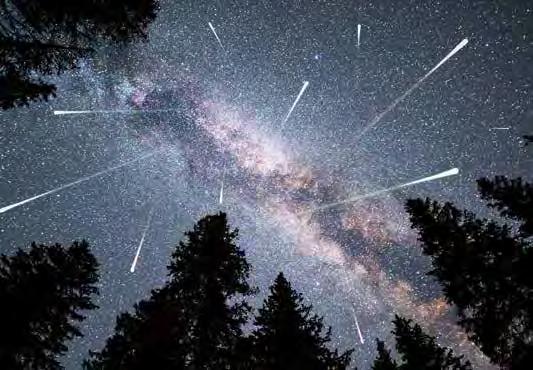
3 minute read
Feature Story
at the lakes
Here’s to new beginnings! The beginning of a new outdoor season, that is. After a winter of snowy days and scraping ice, we can, at last, break out the shorts, assemble docks, and launch boats. And, we can again sit outside at night, wine glass in-hand, watching the stars and moon move across the sky. And if sitting on the water’s edge? It’s even better.
The sky and its reflection come together creating an endless and fascinating panorama of dark and light. What this must have looked like to ancient mariners, beginning their voyages and steering by the stars! While we may no longer need stars for navigation, the night sky remains incredibly fascinating and beautiful— and it doesn’t take expensive equipment or sailing ships to appreciate their brilliance.
In fact, quite the opposite. “Start simple and have fun,” is the advice of Kurt Eberhardt, president of the Warsaw Astronomical Society. “Many astronomical objects and events may be observed without any equipment if you know when and where to look,” Eberhardt said. “Throughout April, just after dusk, look west to see the bright planet Venus, and southwest to see Sirius, the brightest star in the night sky,” he advised.
Super Full Moon
Another unique event in the night sky this spring is something called a Super Full Moon. The moon’s orbit around the earth is elliptical, not round. So at some times during orbit its distance from the earth varies. A full moon, when it’s closest to Earth is called a Super Full Moon. In 2020 that happens on both March 8 and April 7. We won’t have another until April 26, 2021—so mark your calendar for April 7. Interestingly, the supermoon will also create extreme high and low tides on the coasts.

Shutterstock.com
Shower Me With Meteors
Two meteor showers will be visible in coming months. “The night of April 22 and the morning of April 23, the Lyrids meteor shower will be at its peak,” Eberhardt said. Meteor showers are named for the constellation in which they seem to appear. As such, the Lyrids meteor show will appear from the constellation Lyra. The second meteor shower, Eta Aquarids, will appear in the constellation Aquarius in late April and early May, peaking around May 5 and 6.
Should you wish to see more than is visible through the naked eye, be careful. “Do your research before buying any equipment,” Eberhardt warned. “There is a lot of junk out there that will only frustrate and discourage a beginner. A good pair of 7×50mm binoculars, a red flashlight, and a basic star chart can go a long way.” Why the red light? A red light can illuminate your way but does not destroy your night vision, so it won’t impede upon your stargazing. Society in Lowell, and one in New Haven operated by the Fort Wayne Astronomical Society.
“Amateur astronomy appeals to people in many different ways,” Eberhardt said. “Some enjoy the peace of a still night, some the challenge of observing faint objects or seeing celestial events unfold before them. Others enjoy making telescopes…and still others enjoy photographing the heavens.”
Whatever your interest, there is something up above for everyone. So grill and fish by day, but take a few minutes this spring to appreciate the beautiful night sky.

Shutterstock.com
Want to learn more?
The best way to learn is from others who are involved in the hobby. The Warsaw Astronomical Society is there to educate people. More information can be found on their Facebook page, as well as their observatory. There are also observatories operated by the Calumet Astronomical

Shutterstock.com

To learn more:
Skyandtelescope.com Space.com











